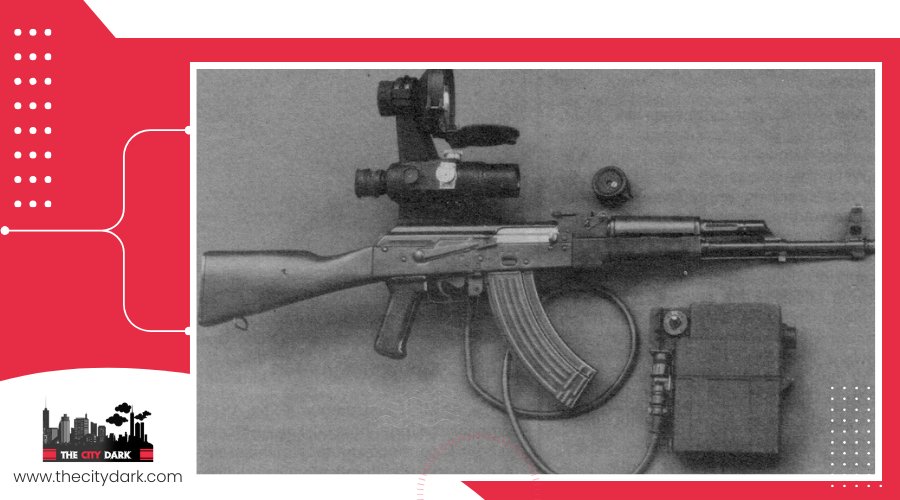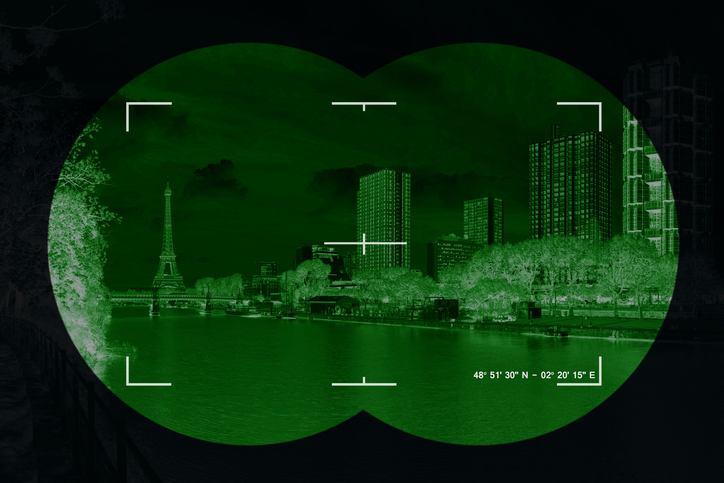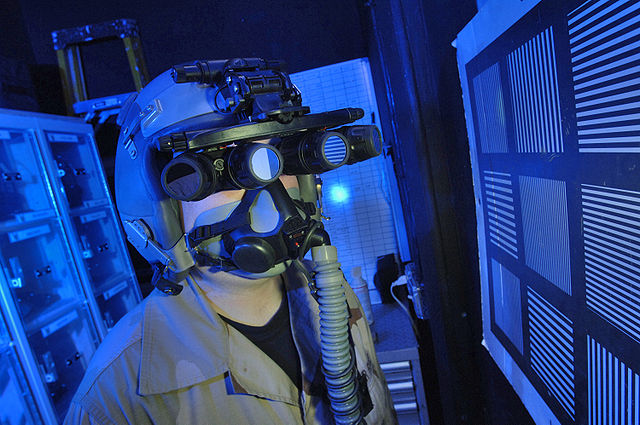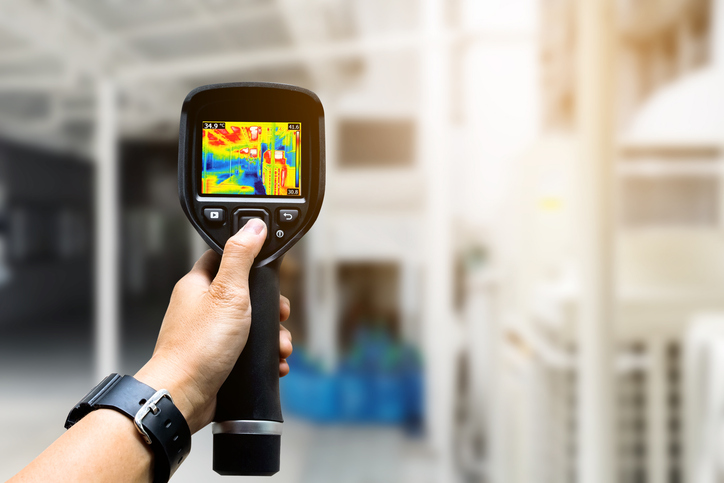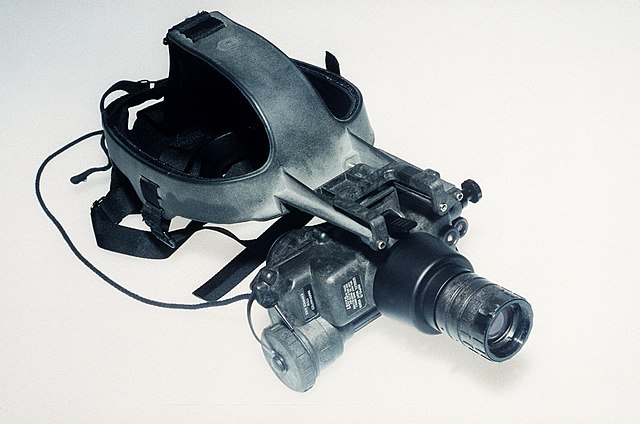A variety of night vision devices are available, each serving a specific purpose. Compact and versatile, night vision monoculars are suitable for many uses. Night vision binoculars provide clear, magnified vision in low light. For hands-free use, opt for night vision goggles. Night vision rifle scopes offer precision in dim conditions. Additionally, there are devices that intensify images, detect heat through thermal imaging, combine technologies for better detection, and provide color imagery with digital night vision. Each type has unique advantages for different needs, enhancing vision in the dark.
Key Takeaways
- Night vision tools include monoculars, binoculars, goggles, and rifle scopes, each crafted for clear sight in darkness.
- Devices that boost faint light help see in the dark, key for military and law enforcement.
- Thermal devices spot warmth and turn it into pictures, vital for watching over and finding hidden items.
- Fusion tech merges light boosting and thermal seeing for better target spotting and knowing the situation.
- Digital night vision brings color views and recording, making night watching easy and fun.
Night Vision Monoculars
Night vision monoculars, celebrated for their compactness and versatility, illuminate the dark, preserving your side vision. Their unmatched portability marks them perfect for myriad uses. Whether navigating dim settings or capturing night scenes, these monoculars ensure clarity and awareness.
The PVS-14 stands out, featuring manual gain control to fine-tune image brightness, crucial in changing light. Beyond handheld use, their adaptability extends to rifle and spotting scopes, improving long-distance aiming and observation.
Night vision technology revolutionizes the experience for adventurers, photographers, and security teams. Their ease, combined with the preservation of peripheral vision, positions night vision monoculars as a superior choice for enhancing nocturnal vision.
Night Vision Binoculars
While night vision monoculars suit the roaming observer, binoculars excel when you need to stay put to see far clearly. Night Vision Binoculars are essential for sharp vision in dim light. They magnify distant scenes, ideal for observing from afar. Unlike monoculars, binoculars let you use both eyes, making your view feel more natural and immersive. This also helps with judging distances in the dark, as using both eyes improves depth perception.
Here’s why Night Vision Binoculars stand out:
- Clearer View: They bring you closer to distant events without moving.
- Great for Watching Afar: They’re best for when you’re staying in one spot but want to see far away.
- Better Depth Perception: Seeing with both eyes makes the view seem more real and easier to understand.
- Note on Generation 1 Devices: More magnification can make the image less clear in Generation 1 devices, a compromise for seeing details from afar.
Night Vision Goggles
For exploring dark places, night vision goggles give a hands-free way to see well. They let you see in depth, which is key for staying aware without light. These gadgets are more than tools for seeing in the dark; they help you know your surroundings. With stereo vision, they make seeing natural and improve how well you can judge distance. This is crucial for orienting, watching, and tactical moves where distance matters.
Made light and comfy, you can wear these goggles long without discomfort. This is good for long watches or complex navigating tasks. They give a broad view, making sure you catch everything important around you, keeping you ahead.
Also, you can mount these goggles on a helmet for hands-free use. This is great in varied settings, letting you focus on other tasks while still seeing well in the dark. For moving through unknown places or watching in darkness, night vision goggles are your best tool for top situational awareness.
Night Vision Rifle Scopes
In the dim light, night vision rifle scopes are crucial. They bring precision and clarity for exact aiming. These scopes transform night hunting or military tasks. Here’s why night vision rifle scopes excel:
- Made for Precision: They have a reticle and an alignment feature. The reticle is your aiming point. The alignment keeps your sight and gun in sync.
- Fast Target Finding: Mounted on guns, these scopes let you quickly see and hit targets. This is key in hunting or intense military missions.
- Tough Build: These scopes can handle tough conditions and gun recoil. You can trust your night vision not to fail when it’s most needed.
- Recoil Safe: They’re made to resist gun kickback. This means they’ll work well for a long time.
Night vision rifle scopes are vital for accurate, reliable shooting in the dark.
Image Intensification Devices
In low-light, image intensification devices make the dark visible. They work by capturing even the faintest light, including near-infrared, and boosting it so you can see. At their core, photocathodes transform light into electrons.
These electrons are then multiplied, making the scene before you bright. This happens through a microchannel plate, which amplifies the electrons. They then strike a phosphor screen, creating a clear image of the night. This technology is found in night vision goggles, monoculars, and rifle scopes, essential for military and law enforcement.
These devices are key for operations needing stealth and precision in the dark. They are crucial for moving unseen, surveillance, or covert missions, offering the night vision needed for success in various scenarios.
Thermal Imaging Devices
Thermal imaging devices work by capturing heat to form pictures. These tools are used widely, from military tasks to search and rescue missions. We will now delve into the operation of thermal imaging and its optimal uses.
How Thermal Imaging Works
How do thermal imaging gadgets make the unseen warmth of objects visible? It boils down to sensing the unseen. Here’s their method in simple terms:
- They detect the heat objects emit, working within the infrared spectrum.
- They pinpoint and log each object’s unique thermal footprint, dictated by its temperature.
- Excelling in spotting tiny temperature variances, they’re crucial for pinpoint surveillance and identifying targets.
- They then transform these thermal footprints into clear visuals, shining in low light.
Thermal imaging turns the hidden heat world into something we can see, proving invaluable for surveillance, revealing the unseen in many fields.
Applications of Thermal Devices
After diving into the unseen world of heat with thermal imaging devices, let’s look at their wide uses across fields. These devices, using infrared radiation, are key in military tasks. They boost surveillance, scouting, and pinpointing targets. They shine in spotting objects that emit heat, allowing clear views any time of day. Their knack for exact temperature readings makes them precious, not just in military areas but also in many surveillance fields. Though pricier than some night vision tech, their advanced skills highlight their big market value, especially in areas needing strict surveillance and accurate temperature checks.
Active Illumination Devices
Active illumination devices significantly enhance visibility in dim conditions by emitting infrared beams. These devices use infrared light to illuminate targets, proving essential when natural light is minimal. They do more than light up darkness; they transform infrared images into visible light, providing a clearer view of the surroundings.
Here’s why active illumination devices are incredibly useful:
- Active Infrared Night Vision: These devices excel in night vision, projecting an infrared beam that is captured and turned into a visible image.
- Infrared Illumination: Infrared illumination allows for discreet presence in darkness, ideal for covert operations or observing wildlife.
- Versatile Applications: From military missions to night-time driving or reconnaissance, active illumination devices enhance vision in almost any setting.
- Unaffected by Ambient Light: Their performance does not depend on surrounding light levels, enabling reliable use in various conditions, from the darkest nights to dim interiors.
Fusion Night Vision
As you explore night vision technology, fusion night vision emerges as a standout innovation. It melds image intensification with thermal imaging, offering superior detection and identification capabilities across diverse lighting conditions. Here, we break down fusion technology’s essentials, benefits, and constraints, showcasing its transformative impact on night operations.
Instead of highlighting what fusion night vision cannot do, we focus on its capabilities. It transforms night vision, making operations more effective.
Fusion Technology Basics
Exploring the essentials of fusion night vision, we see its power in blending image intensification with thermal imaging, sharply improving situational awareness. Here’s the essence:
- Fusion marries the sharp visuals of image intensification with the heat-detecting prowess of thermal imaging.
- This combination boosts target detection and recognition, clarifying the real from the false.
- Fusion devices shine under any light, adaptable across environments.
- Mainly for military use, this technology is key for missions needing unmatched situational awareness and accuracy.
Advantages and Limitations
Fusion night vision enhances visibility in dim light, but consider its costs and complexity. It merges image intensification with thermal imaging, boosting target detection, recognition, and identification in tough conditions. You’ll see both heat and light images at once, offering a comprehensive view unmatched by other systems. This technology is ideal for military, law enforcement, and surveillance, where superior situational awareness is crucial. Yet, its high cost and operational complexity may not suit everyone. Think over these points before choosing fusion night vision.
Digital Night Vision Devices
Digital night vision devices transform night vision. They use digital sensors to make the dark visible in color. These devices are different because they turn low light into clear, colorful images. Here’s why they stand out:
- They are less expensive and lighter than old night vision gear. This makes them easy for anyone to use, from casual users to experts.
- They show color images, not just green or black and white. This gives a true and clear picture of the night.
- They let you record your night experiences. You can keep every moment.
- You can connect them to phones or tablets for immediate viewing. Sharing what you see at night is straightforward.
Digital night vision makes seeing in the dark straightforward and exciting.
Frequently Asked Questions
What Are the 3 Types of Night Vision?
Understand the core types of night vision. First, image intensification amplifies available light. Second, active illumination, through infrared, aids the military. Third, thermal imaging reveals heat, critical for security and wildlife study.
How Many Types of Night Vision Devices Are There?
When exploring night vision devices, focus on their simple types: devices using infrared technology, those with thermal imaging, and those enhancing images. They differ by generation, improving in military tasks, wildlife watching, surveillance, and night hunting.
How Many Types of NVGS Are There?
Four NVG types exist. Monoculars. Binoculars. Goggles. Rifle scopes.
They excel in military use, wildlife tracking, surveillance, night fishing, capturing images, emergency response, exploring caves, observing dark skies, and conducting security patrols.
They are ideal for operations requiring night vision in environments ranging from the battlefield to the wilderness.
NVG types: monoculars, binoculars, goggles, scopes. Essential for night tasks in various fields.
What Is the Best Type of Night Vision?
Choose devices with sturdy tech, infrared, and thermal imaging for low light. This suits military, wildlife, or hunting needs.Opt for robust, clear technology. Devices must withstand the elements, illuminate in infrared, and see in thermal for darkness.
Conclusion
Night vision devices vary. You have monoculars, binoculars, goggles, rifle scopes, and more. Each serves a purpose. For moving in darkness, choose wisely. Aiming? Consider a rifle scope. Image intensification, thermal imaging, or active illumination reveal the unseen. Fusion night vision and digital devices redefine clarity. They blend technologies for better images. For every night adventure, a perfect tool exists.

